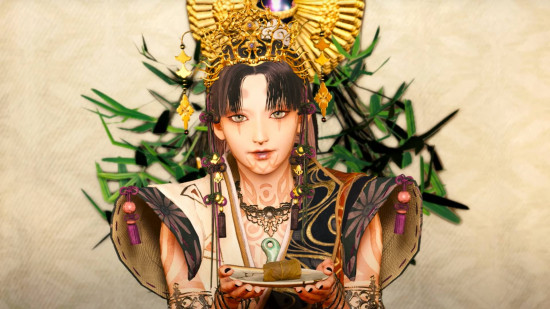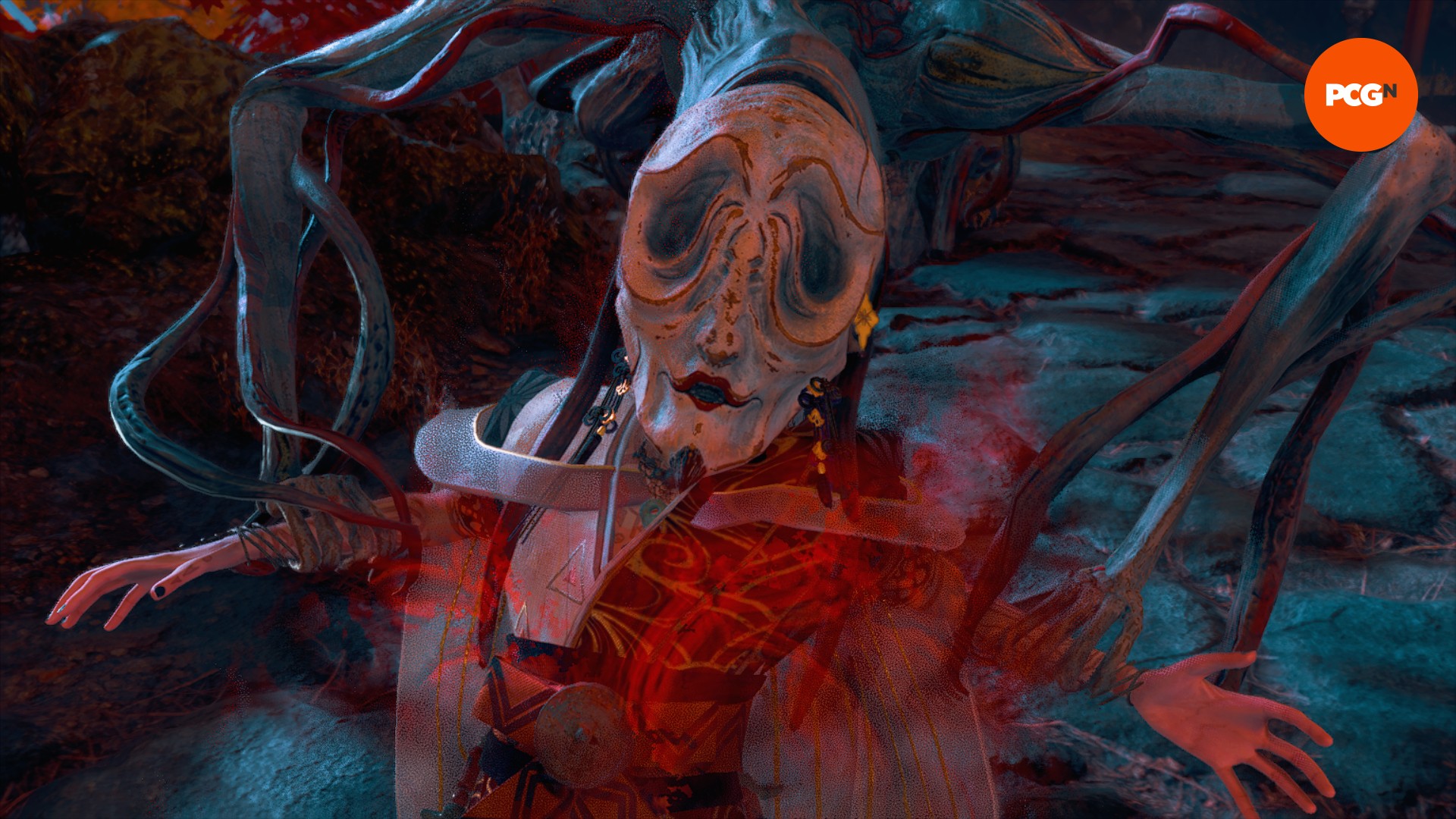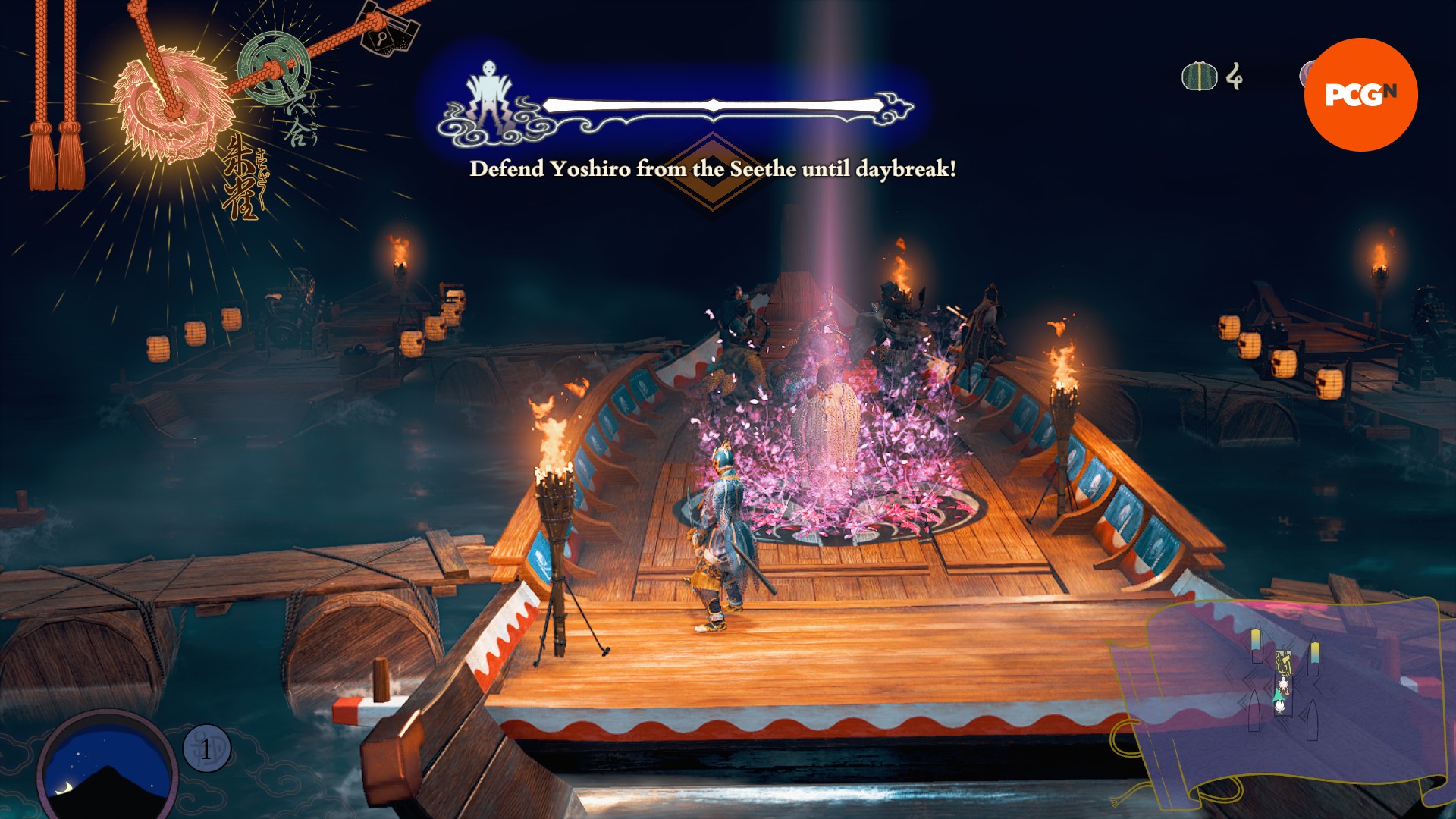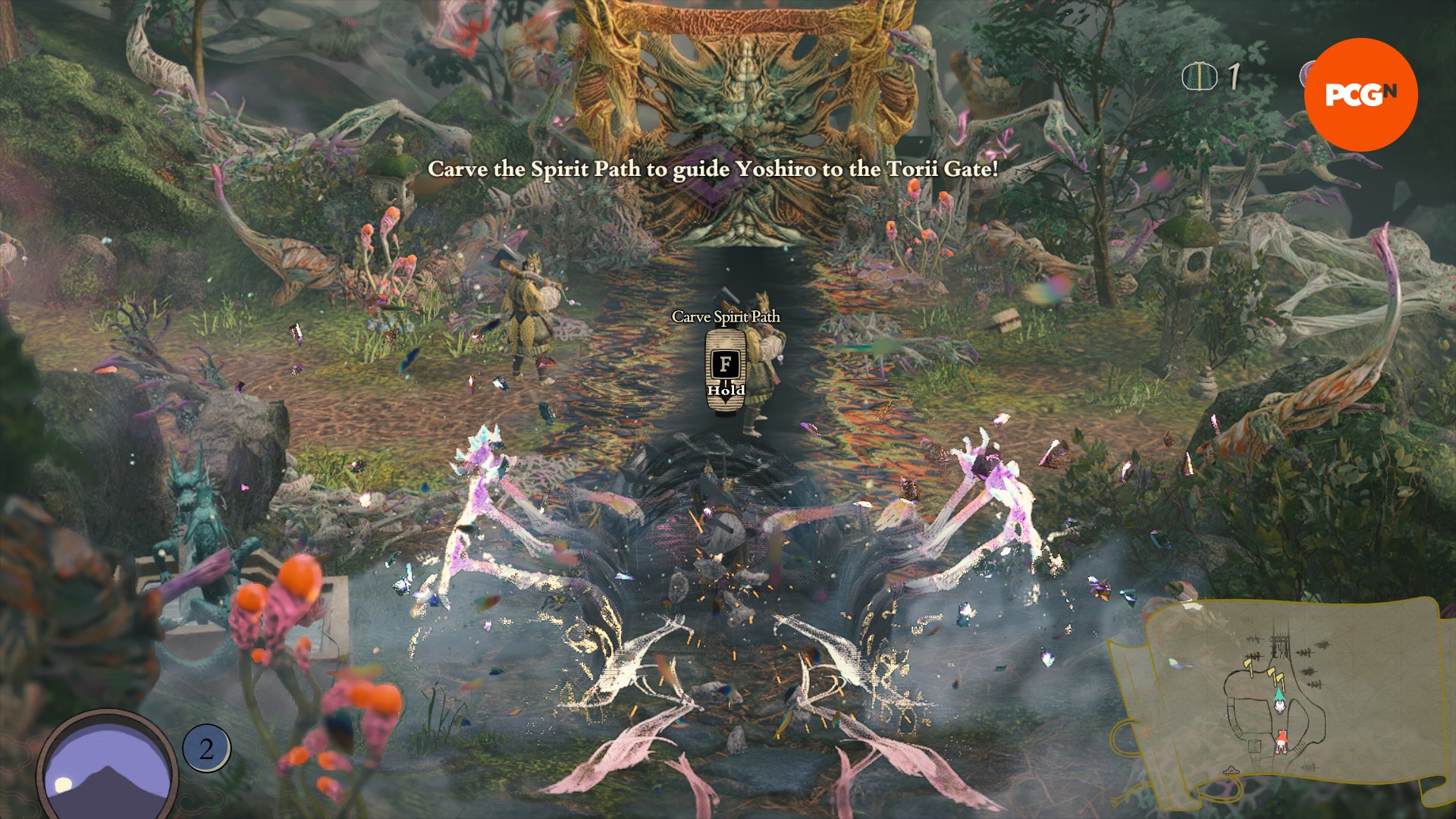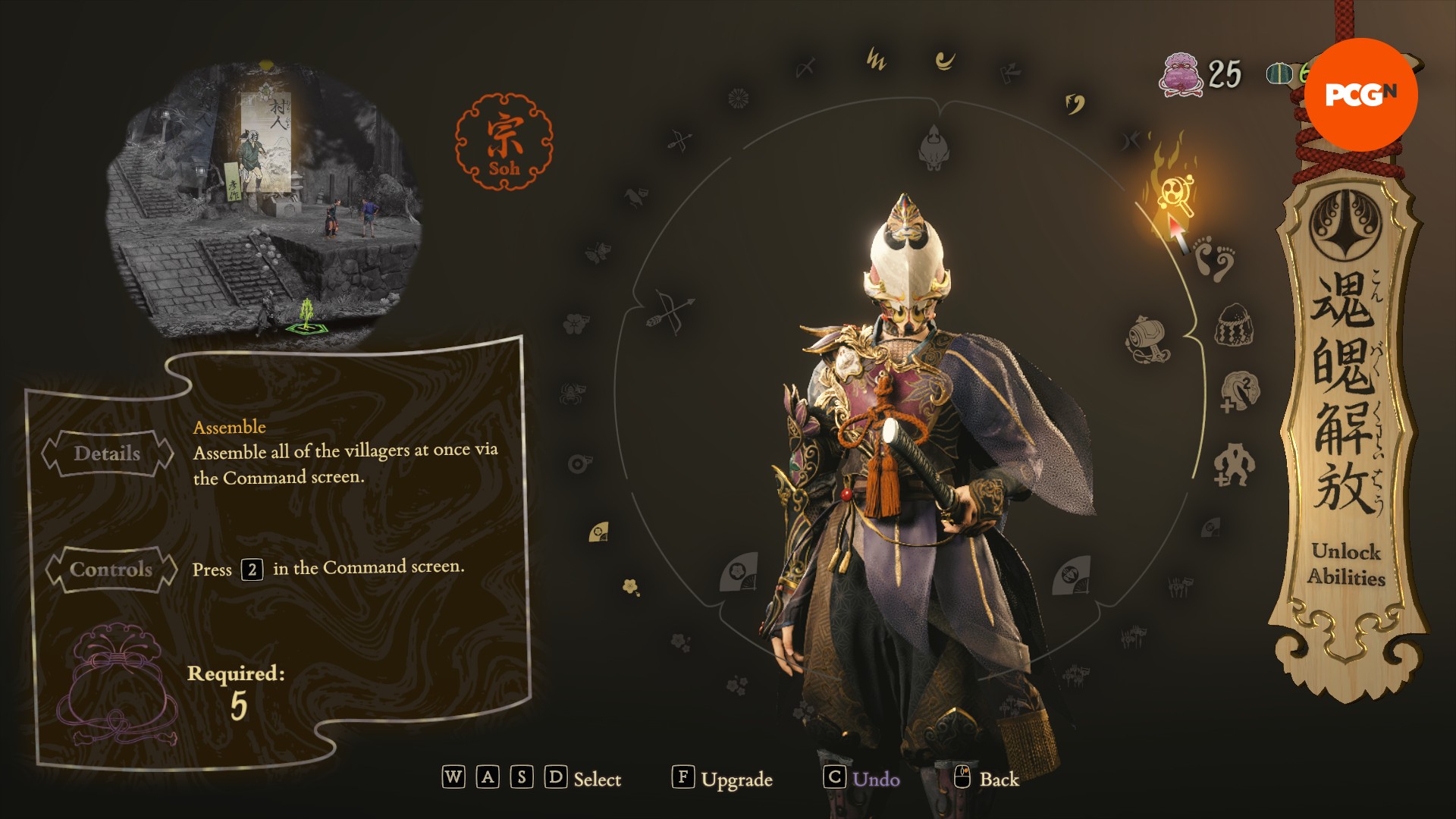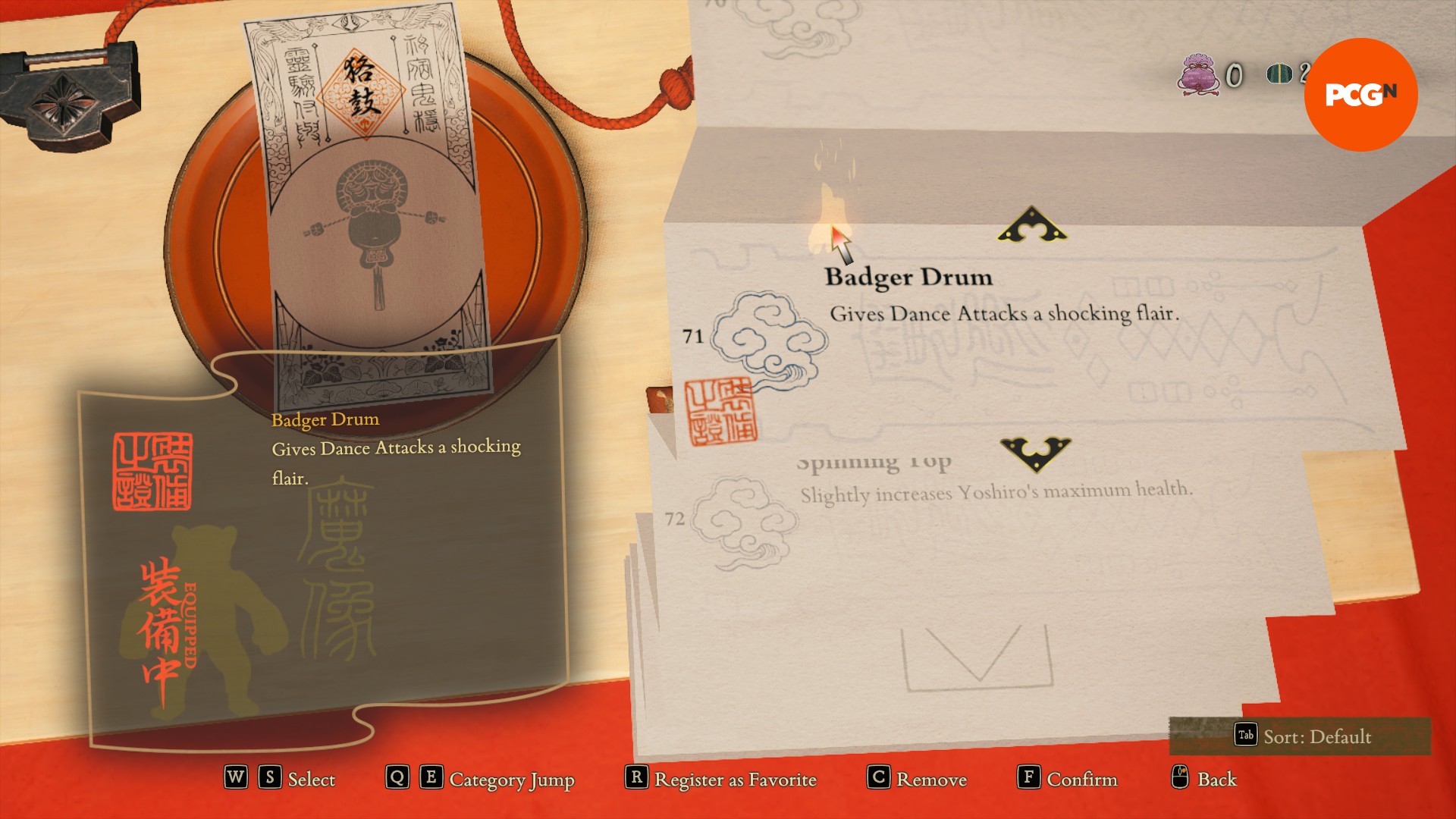Our Verdict
Characterized by stunning visuals rooted in Japanese folklore, Kunitsu-Gami: Path of the Goddess' tower defense and hack-and-slash action is like nothing I've ever played before. While there are a few minor frustrations, Capcom's new adventure is a must-play and a ready-made cult classic.
As I sit here writing this introduction, I’m at a loss for how to introduce Kunitsu-Gami: Path of the Goddess. The brainchild of Capcom Development Division 1, which is responsible for one of my all-time favorite franchises, Devil May Cry, I was worried that this Japanese folklore strategy game turned hack-and-slash adventure would be little more than a fun oddity. Following a brief hands-on at Summer Game Fest, however, I knew that Kunitsu-Gami was something special – something unquantifiable. So, here I am, reviewing a game I hadn’t even heard of two months ago, still perplexed as to how to accurately describe what exactly it is.
You are Soh, a spectral warrior tasked with protecting Yoshiro, a beautiful divine maiden who loves to dance the night away. Her shrine on Mount Kafuku has been defiled by a twisted, malevolent presence that warps the world around it, transforming torii gates into gaping purple mouths that spew torrents of weird and wonderful enemies. As Yoshiro’s protector, you’re tasked with carving your own passage through the defilement and restoring the balance – hence the name, Kunitsu Gami: Path of the Goddess.
Part strategy game, part tower defense, you’ll be purging defilement for crystals during the day, which you can then use to assign various AI villagers different roles. From here, night falls and the battle commences, with demonic entities clambering over one another to tear you and Yoshiro limb from limb. As the battle ends and the sun rises, you’ll use your hard-won crystals to guide Yoshiro to the area’s main torii gate so she can exorcise the defilement by busting out some sick moves. Then, you do it all over again. This sounds like it could get boring quickly. Prepare, fight, guide Yoshiro, do it again. But I’m here to tell you that it doesn’t; instead, Kunitsu-Gami is a lesson in variety and steady progression.
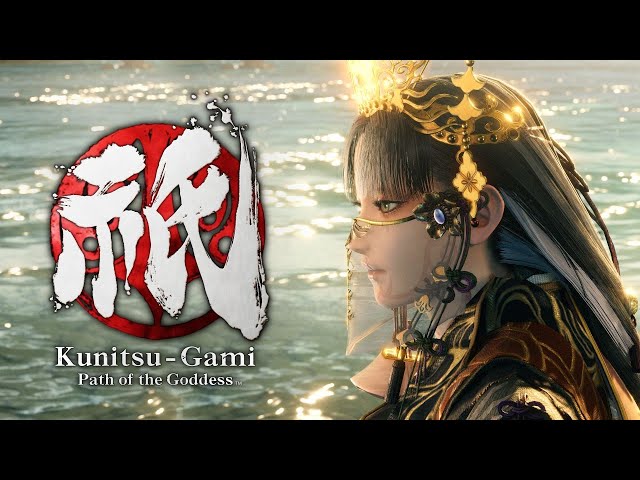
It initially seems like each stage will simply unlock a new villager type. You start off with woodsmen, then acquire archers, the mage-like ascetics, sumo wrestlers, and healing shamans (to name a few). But, as you progress, the battle zones morph to mirror your level. Suddenly there are two torii gates hurling demons at you, or you’re fighting on a boat; there are new flying enemies, or there are undead, corrupted samurai with blades sticking out of their heads. There’s never a dull night on Mount Kafuku.
Speaking of shambling, undead samurai, each stage introduces a new enemy type that’s beautiful and deadly. Inspired by various Yokai, the ‘monster under the bed’ of Japanese folklore, their designs are a perfect blend of traditional Japanese imagery and deep, angry colors. Take the Hidarugami for instance; it latches onto Yoshiro and slowly drains her energy, and you have to supply it with a steady stream of crystals to detach it. In the traditional folklore, Hidarugami are ‘hunger spirits’ that once belonged to people who died of starvation in mountain regions – fitting, right?
Not only does Kunitsu-Gami marry tradition with modern videogame concepts, but it also makes the fabled Yokai more than just entries in a bestiary that would normally gather dust. Instead, they’re real and terrifying.
Stages often culminate in a boss fight. From a huge, caterpillar-like creature called Mukadejoro with armor-plated limbs to the dog-like Batsu, these big bads are varied and test your ability to juggle multiple mechanics. One boss spends most of their time in the air, meaning you’ll need to kit out your villager roster with archers, while others rely entirely on brute force, making the woodsmen and sumo wrestlers your best bet.
Bosses typically scale with difficulty, but the aforementioned Mukadejoro is the exception to that rule. Appearing a few stages in, it’s easily the toughest boss I faced because of its speed, length, and mobility. Additionally, no matter what combination of villagers I used, the AI consistently launched them at its shielded sides instead of its fleshy head, meaning I was the only one dealing any damage. Safe to say it was a pretty long fight.
But Mukadejoro is also one of my favorite fights in the entire game. While I won’t spoil it, strategic thinking is imperative to stop Mukadejoro’s mob summons from overwhelming Yoshiro. Where initially it feels like you can hack and slash your way through rounds, from the Mukadejoro fight onwards, it becomes very clear that strategy is key. Having the right villagers in the right places and ensuring Yoshiro is far enough away from the fighting but close enough to reach the torii gate during the day is a balancing act you’ll have to perfect.
But what happens when you cleanse the scourge and secure each village? It’s not a case of just moving on to the next battlefield, as you’ll need to help the villagers rebuild. While this at first felt like a cozy side quest, it quickly becomes a more important step in your journey.
As you fix up various structures, you’ll be rewarded with various upgrade items, including the ever-precious Musubi, which you use to buff both Soh and your villagers. You can also pick up Ema Plaques, which depict in-game models and are hung on racks in your villages, as well as sweets, which seem to be purely cosmetic.
Each project requires a certain number of villagers to work on it, meaning you’ll have to be careful where you split your resources if you’re looking to grab as much Musubi as possible. Completing the village will reward you with crystals, so you’ll have to decide whether or not you want to repair it quickly by ensuring all of the available villagers are working on something, or if you’d rather leave some workers without a job to get the Musubi as soon as possible.
Strategy is at the core of everything you do in Kunitsu-Gami – a fact that becomes increasingly apparent as you play. Everything has a purpose and everything makes sense, including the shiba inu who wander around your villages; if everything has a purpose, that means I need to keep stopping to pet them, right?
Going back to Musubi, this shiny little purple bag of tricks is key to upgrading Soh and your villagers. Each villager has a maximum of six upgrades, largely focused on their health and damage output, whereas Soh’s tree is more extensive (note that it’s unlocked slightly later in the game). Soh’s upgrades are largely split between improving their flow, adding new combos to their roster, and upgrading the command screen. You’ll also be able to unlock archery, but that one might take a little while.
The new Oka combos and general updates for Soh provide immediate benefits, especially as I found their slashes were just a little too slow to achieve what I wanted. Being able to add a new tsuba guard (powerful, interchangeable abilities slotted onto your sword) and Mazo Talismans (charms that give Soh and the villagers buffs) is also a very welcome addition, even if some of the optional upgrades for the command screen should probably be basic features rather than unlockable ones.
Take Assemble, for example, which allows you to pull all of your villagers to one area by pressing 2 when in the command menu. Sure, this cuts down on having to reposition your villagers mid-fight, but a part of me enjoyed the moment-to-moment tactical changes you have to make. Assemble, for me, would do nothing but speed up my villagers if they were lagging behind when switching between areas, but that doesn’t feel important enough to be a purchasable upgrade in itself – especially because you also have the Attack and Defend options in major boss battles.
Fixed Position, which does what it says on the tin, feels similar, as villagers don’t often move outside of their assigned radius during battle. This makes some of the upgrades feel unexciting, as though they were carved out of the base ability lineup to draw out the sense of progression.
Plus, while getting more Mazo Talismans is cause for celebration, there’s no way to sort through them quickly, so you have to scroll through every single one to find what you’re looking for. The parchment-inspired menu system is gorgeous, but given how many Talismans you end up accruing, it may have been easier to simply place them on one screen instead of in a scrollable list.
But I can’t close out my review without emphasizing just how beautiful this game is. Kunitsu-Gami brings Japanese myths and legends to life in a way that’s simultaneously vibrant and macabre. The Seethe’s corruption turns plants and flowers into twisted, alien fauna, and the huge torii gates have writhing, screeching heads embedded into them, with bony limbs spread across their tall foundations. There are lashings of Devil May Cry’s ‘demonization’ of familiar landscapes, but it remains deeply rooted in fascinating Japanese folklore.
Kunitsu-Gami: Path of the Goddess is truly unique, and it’s genuinely exciting to see something so weird and wonderful from a major videogame publisher like Capcom. We need more big swings like this bizarre tower defense and hack-and-slash mashup. It’s a perfectly choreographed dance of different genres, thematics, and systems. Most importantly, though, it’s something completely new.
